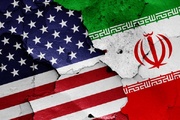The report emphasizes that countries need to adjust to both cyclical and structural changes, especially in light of the global slowdown and an expected reduction in China’s growth rate.
Total exports and imports from the region grew by only 1.6 per cent in 2014, however, when excluding China from the regional total, exports from the Asia-Pacific region registered a decline of 0.4 per cent according to the Asia-Pacific Trade and Investment Report 2015 the United Nations Economic and Social Commission for Asia and the Pacific's (ESCAP) annual flagship publication.
The continued sluggish pace of trade and investment growth in the region is impacting the prospects of a merchandise trade recovery in the near-term.
Despite this, the Asia-Pacific region stands out for its significant and sustained achievements in leveraging trade and investment flows for development.
Launching the Report in Bangkok, United Nations Under-Secretary-General and ESCAP Executive Secretary Shamshad Akhtar emphasized the importance of reviving trade and investment flows at a time when Member States have recently endorsed the centrality of trade and investment, as critical means of implementation for the new Sustainable Development Goals (SDGs).
Akhtar called on regional policymakers to enhance competitiveness in order to promote inward investment and technology.
“The data and analysis in the 2015 Asia-Pacific Trade and Investment Report will help to mainstream trade considerations, as we work towards achieving the new Sustainable Development Goals,” said Akhtar.
“Production fragmentation across national borders as part of Global Value Chains (GVCs) has opened new opportunities for developing countries to integrate in global trade; in order to prosper in this globalized environment, countries will need to boost competitiveness and productivity to attract inward investment and technology, and find areas where they can successfully integrate in these value chains,” she noted.
Despite the lowering of trade growth prospects, it is likely that the Asia-Pacific region will hold its position as the largest trading region in the world.
In 2014, the region accounted for almost 40 per cent of global exports and imports and intraregional imports remained at slightly more than 50 per cent of the total in 2014, with intraregional exports at 54 per cent.
The outlook for regional services trade was brighter than for merchandise trade.
Asia-Pacific exports of services increased at 5.1 per cent in 2014, compared with 4 per cent in the previous year.
Exports of travel and other commercial services were especially strong, supported by growing demand for travel by China.
The report shows that trade facilitation measures, including implementation of the WTO Trade Facilitation Agreement (TFA), can help reduce trade costs.
Indeed, many countries in Asia-Pacific are getting on with implementing trade facilitation measures ahead of TFA ratification.
These changes will help reduce regional trade costs but much more still needs to be done, especially in landlocked countries.
The report suggests that a regional agreement on paperless trade would mark a substantial breakthrough in this regard.
The Report also reinforces the importance of countries maintaining open trade regimes, and avoiding implementation of trade-restrictive measures.
It highlights the ongoing problems created by increases in use of trade-restrictive measures across the region, particularly non-tariff measures.
These measures have detrimental consequences for the region’s least developed countries, presenting particular obstacles to small and medium sized exporters.
This year’s Report contains analysis on the challenges and opportunities posed by the rise of GVCs as a major vehicle of trade.
Recent years have seen increased fragmentation of production across national boundaries with all its attendant benefit, supported by improving logistics, communication technologies and lower barriers to trade.
The Report concluded that the Asia-Pacific region has been central to the development of GVCs and is now at the heart of many global and regional supply chains.
Despite this, most countries in the region have not fully benefitted from the expanded flows of trade and investments associated with the rise of GVCs and remain excluded from their potential benefits, particularly low-income countries, as 90 per cent of GVC-related trade is found to occur in just ten regional economies.
HA/PR
























Your Comment